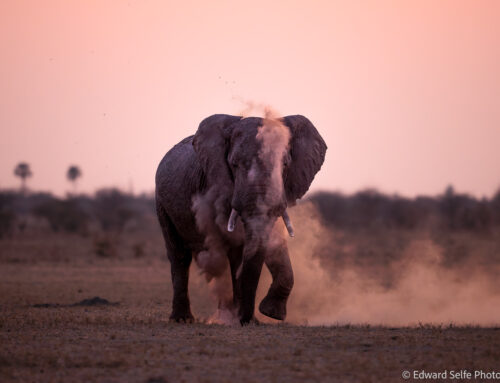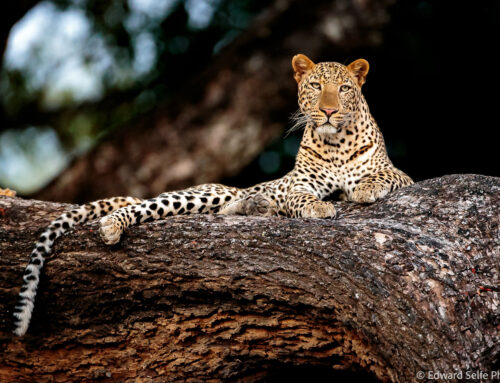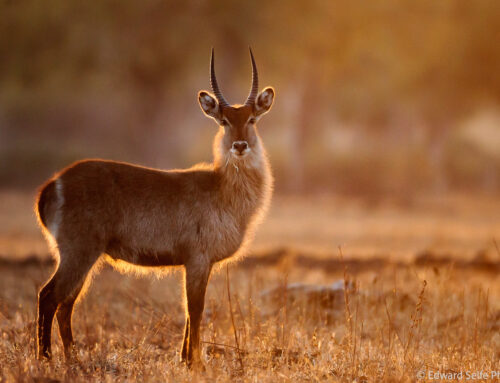The arrival of digital camera technology has put photo manipulation into the hands of every computer owner. Previously, only darkroom experts had the ability to control the output. Now that we all have this power, what level of ‘adjustment’ is ethical, and what is cheating?! I’m about to reveal my secret and share some of my favourite images, in both their RAW and edited forms.
But before I do that, I want to explore this idea further. If not for improving photos, then what is the concept of post processing for? When there are tools such as Photoshop, Lightroom and Aperture available why not use everything that is at our disposal? Each photographer will have his/her own answer to these questions, and their responses may well be shaped by the type of photography that they are doing: product photographers will want to show the product at its very best, making sure that all the colours are correct and the image stands out from the page/screen; art photographers might argue that they are not bound by any creative constraints and can be as liberal as they want with computer software.
For wildlife photographers, I think it’s different. We need to be very careful how we display our work, making sure not to mislead the viewer (or declaring it when we are). But on the other hand, I see no issue using Lightroom (or similar post-processing software) to enhance a photo that is already good quality but needs minor adjustments – similar, I would say, to what film photographers did in the darkroom through processes such as length of exposure, dodging, burning and masking certain areas of the film negative.
But if wildlife photographers are supposed to show nature just as they saw it, why is it permissible to use post-processing at all?
Good point. And the answer is that cameras are not always able to capture the complete picture that we see with our highly developed eyes.
So I believe that there are a number of circumstances when photographers might use post-processing, and I want to look at some of them here. These include:
- when the camera is not able to capture the colour or tonal range (difference between light and dark) that is contained in the scene
- when the camera’s automatic white-balance meter doesn’t accurately judge the colour of the light
- when a fast action event prevents the photographer from adjusting settings quickly enough
- when a photographer is lazy or doesn’t understand exposure theory – the “I will fix it later in Photoshop” photographers!
With the exception of the final category – which I will come to later! – there is justification for the use of software to augment the digital photography workflow and improve the final product.
First up, here is an example of a scenario where the camera’s not managed to capture the full range of tones in the image. Cameras can only capture a certain range of light to dark which is a much smaller range than our eyes can. Use the slider on the image below to see the before and after (before on the left, after on the right).
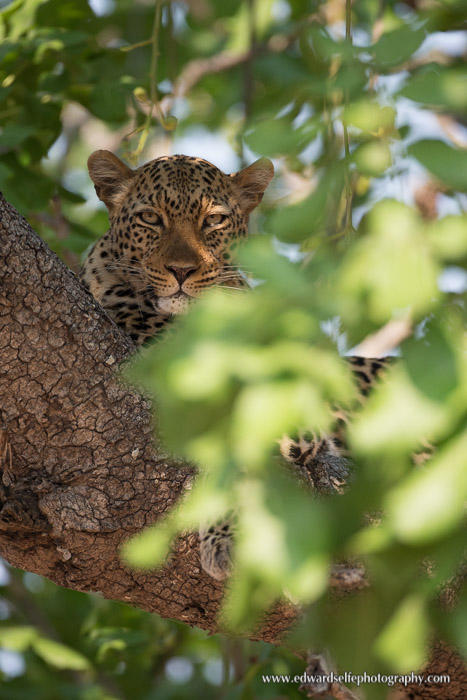
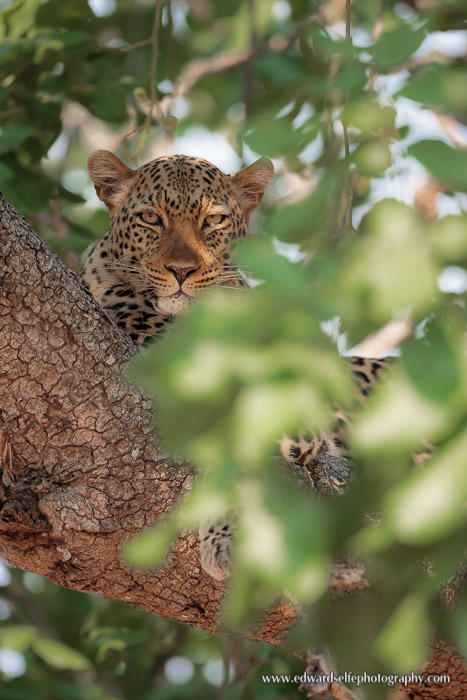
This leopard image is one of my favourites! I had plenty of time to take this shot as the cat was resting quietly up in the tree. After taking a few shots, I reviewed the histogram on the back of the camera and saw that the brightest whites were clipping (burning out) and I wanted to ensure that they did not – ideally I hoped that I would be able to keep a bit of blue sky coming through the leaves. So I underexposed the image intentionally, knowing that the dark areas would be too dark, but that I could adjust them later on the computer. Between before and after, there’s not much difference really, but lifting the shadows has just added some ‘impact’ to the image.
Is this cheating? Well, it depends on whether you think we should accept the shortcomings of current digital cameras, or make use of software to get the best from them. Already there are new digital cameras on the market that offer higher dynamic range (Canon’s EOS 1DX Mk II for example), so it will soon be possible to get something closer to my final image in-camera.
My second image required some post processing for an entirely different reason. It was taken in September, when the dry season is at its height, and there is loads of dust in the air. This tends to filter the light and dull the colours of the bush. So when this group of elephants crossed the river, it looked absolutely stunning to the eye, but the camera’s rendition was a bit short of ‘punch’.
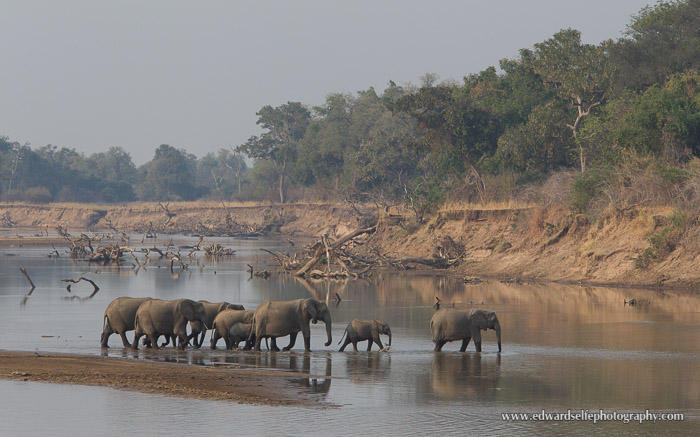
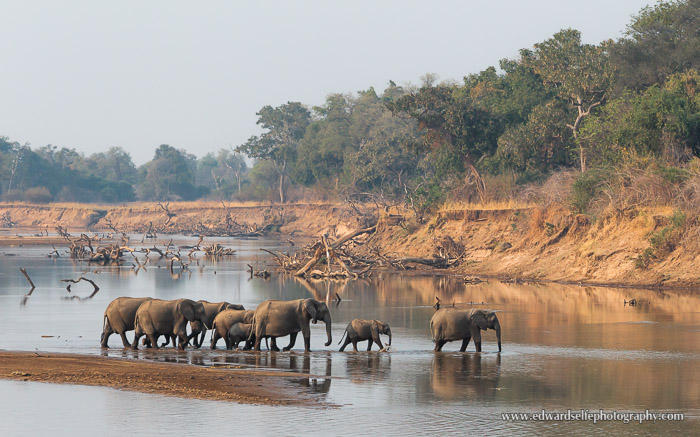
As you can see from the before and after comparison, I boosted the contrast on the image (to counteract the dust which filtered the light) and added a bit of colour saturation to make the scene more “as I saw it”.
The situation is actually similar with the following image, taken at the height of the dry season, of a group of impalas rushing across the sand. Arguably, I could have counteracted some of the “dullness” of the image by increasing the exposure slightly (the impalas are darker than their background so a bit of over-exposure would have helped, but mostly the drabness of the image is caused by the flat filtered light that comes from the dusty conditions.
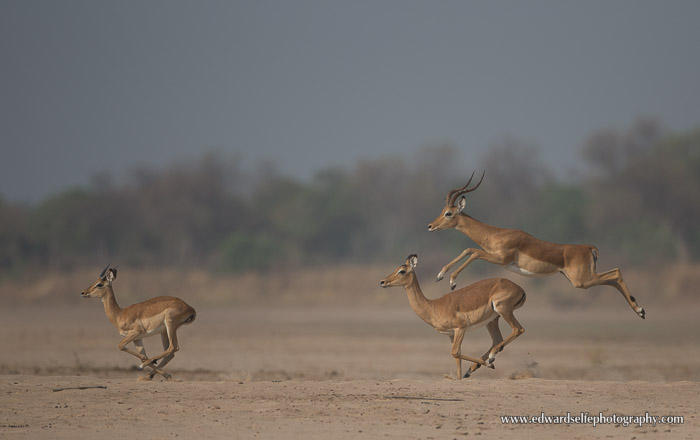
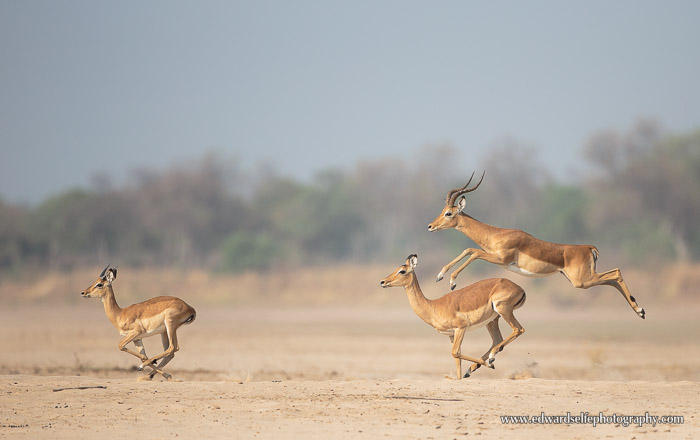
The next image has a very strong colour cast, or put another way, the camera’s assessment of the colour of the light was incorrect. The best way to think about this is to consider how different a white t-shirt looks in soft afternoon light from how it might look in a night-club under UV lights: in the first case, it will look golden yellow, and in the second, very blue. The wavelength of light affects how colours look, both to our eyes and to the camera. Modern cameras are very good at assessing light temperature (or the white balance) such that I leave mine on Auto WB all the time and rely on the camera to judge correctly. But sometimes, and particularly at night, the camera gets it wrong, as in this shot of a leopard snarling at a group of hyaenas nearby.
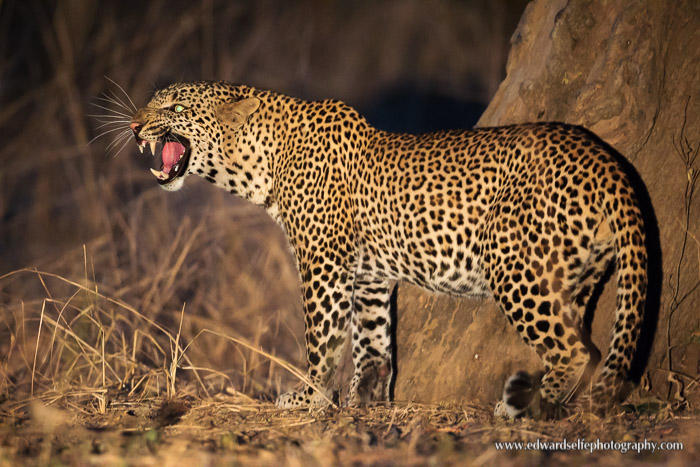
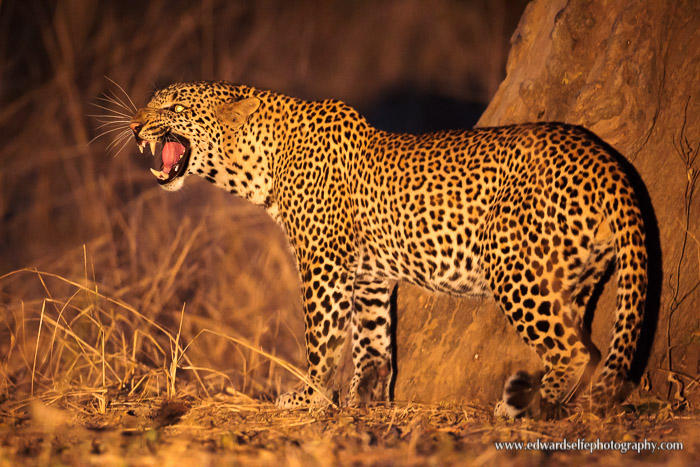
I used Lightroom to adjust the image so that the colours looked more like they did at the time. You will notice that nothing else has changed about the image apart from the removal of the yellow colour cast.
The final image is one where I was simply not able to adjust the settings fast enough on my camera. We had been moving with this pride of lions for around 30 minutes, moving ahead of them, positioning the vehicle for a good background and then waiting for them to approach. This had worked well, but in this situation, the cats moved from being against the water in the river (which was quite dark) to being surrounded by sandbank (which is light coloured). At the same moment, a wonderful interaction took place between the pride male and his cub, and I snapped a shot to record this “Dad and Son” event. I should have flicked my exposure compensation from -2/3 EV to +1/3 or +2/3 but I simply didn’t have time. So I made use of the computer software available to me and added a bit of exposure to the image artificially.
[As an aside, the reason that the image becomes darker when the lions moved against the brighter background is because the camera’s sensor notices the “brightening” of the scene and reduces the exposure to keep the final image “middle gray” (halfway between black and white) on average. This is not a fault; this is how meters and auto-exposure functions are designed to work – and because it behaves predictably, it’s possible to adjust in advance to compensate….but I simply didn’t have time!]
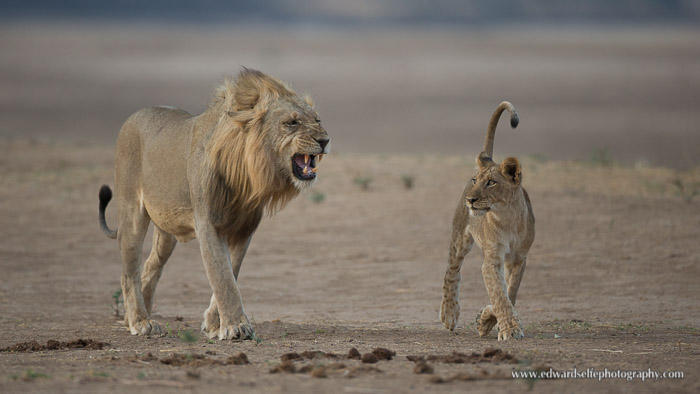
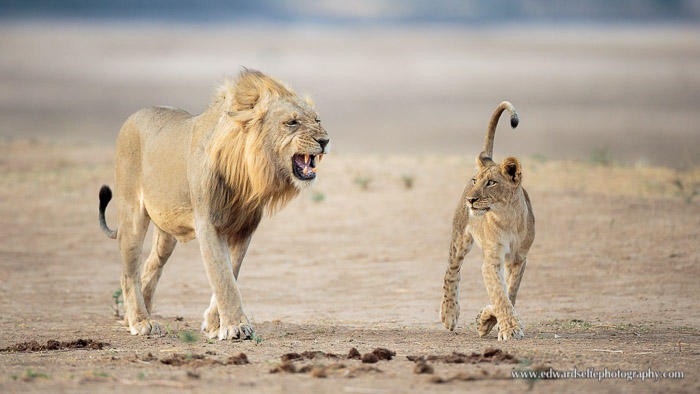
So there you have it – 5 of my favourite images shown as they came out of the camera….are you surprised at the lack of post-processing work done? Or shocked at how dramatically different the originals are from the final shots? Write your thoughts in the comments section below and I’d be happy to discuss.
Oh, but what about the lazy folk I talked about in the introduction? We nearly forgot about them! I am fortunate that I have guided very few photographers who rely on the maxim “I’ll fix it later in Photoshop” and I’m grateful for that. While not the worst crime in the world, the temptation to put your camera onto a “safe” settings mode and then fire away without thinking about the exposure is a bit lazy (after all we are photographers not picture-takers) and also doesn’t make the best use of the fantastic tool that dSLRs represent. Modern cameras are very forgiving and allow a lot of post-processing latitude, but I don’t think that means that it’s OK to do that. Think about the scene in front of you, consider how the camera “sees it” and make adjustments accordingly.
My exposure compensation setting is changed continuously, rarely settling on zero for long, and certainly my ISO function is always on the move to cater to changing light and my depth of field requirements. The better the photo out of the camera, the better the final image will be, and also the higher will be your sense of satisfaction. The day is coming when cameras will record 100 frames per second and allow all manner of post-processing adjustments, but until that time, we have a chance to preserve the art of photography. I hope you agree with me…..? Have your say in the comments below.
Until next time….

